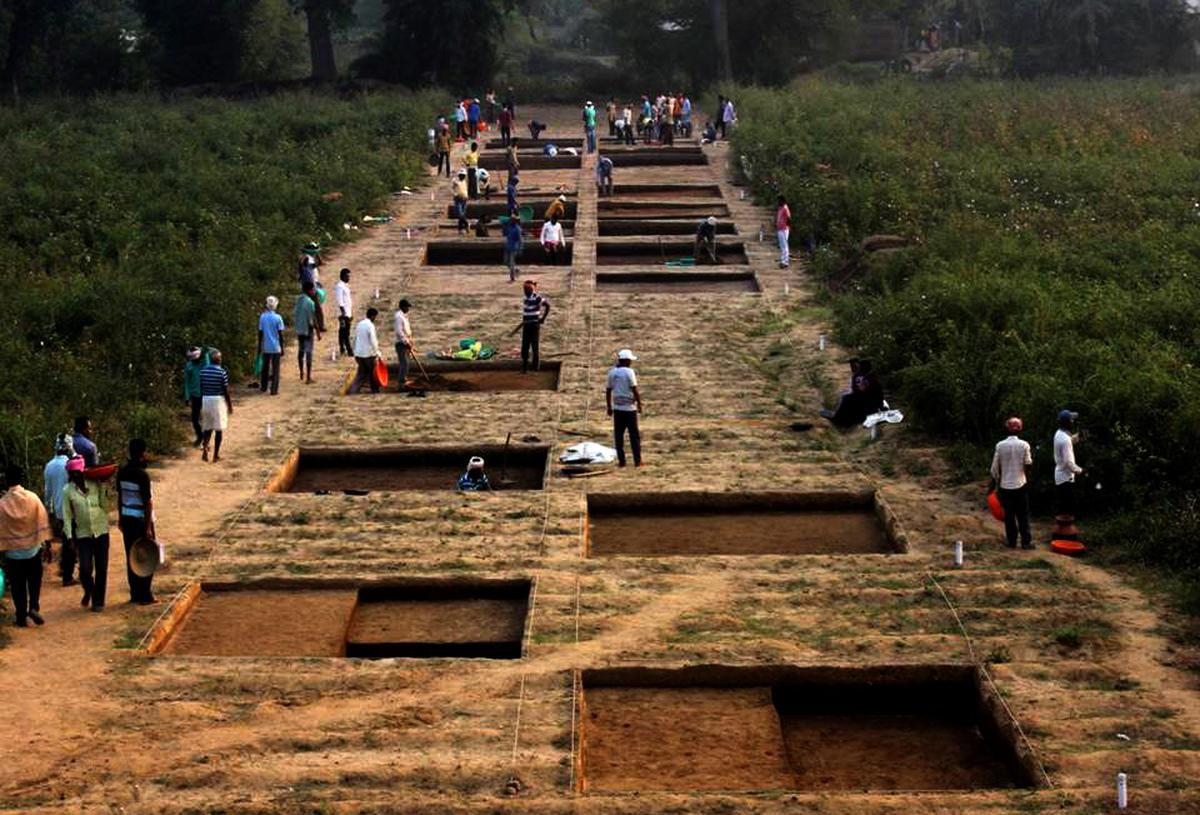Carbon Dating revealed: The Archaeological Survey of India (ASI) has determined that the Asurgarh fortified village in Odisha’s Kalahandi district is the oldest among the main fortified sites in the state. It was constructed in the ninth century BC. Archaeologists used the Accelerator Mass Spectrometry (AMS) radiocarbon technique (Carbon Dating) to calculate the date of the ancient site, which established the Asurgarh era as encompassing three cultural phases from the ninth century BC to the second-third century AD.
Early historic sites in Odisha have been compared to the Asurgarh era, including Sisupalgarh (near Bhubaneswar); Jaugarh, a fortified village on the Rushikulya valley (Ganjam); Manamunda (Boudh); Khalkattapatna (Puri); Manikpatna (Puri); Radhanagar (Jajpur); Kharligarh (Balangir); and (Kalahandi). Scholars excavated the site in order to uncover connections with early civilizations like the Harappan Civilisation.
Modern carbon dating methods have been employed
ASI used the modern Carbon dating method to determine age. In none of the other excavation sites, modern carbon dating methods have been employed to determine the age. “On charcoal gathered from the Asurgarh site, we used the AMS radiocarbon technique (Carbon dating). Around the eighth-ninth century BC, the landscape of Asurgarh drew iron-using people to live there. “The excavation revealed three periods of human occupation with no gaps,” said Dibishada Brajasundar Garnayak, an archaeologist with the ASI in Meerut Circle.
Mr. Garnayak formerly worked with the ASI in Bhubaneswar, where he researched Asurgarh. The Iron Age (ninth century BC to fourth century BC), the early Historic or Rampart phase (second century BC to first century AD), and the Late Period/Decline of the colony, he claimed, might be split into three eras (second century AD to third-fourth century AD).
The examination of artifacts and materials reveals that during the ninth century BC, local residents began to carve out a rural village in the landscape. Between the fourth century BC and the second century AD, the settlement may have expanded in tandem with the development of iron metallurgy. This time overlapped with the Mauryan period. The fortified settlement is thought to have slowed down between the second and third centuries AD. “It could have collapsed due to a nearby state’s territorial expansion, like as the Satavahana and early Gupta dynasties, or due to ecological changes,” Mr. Garnayak speculated.
417 antiques have been recovered
A total of 417 antiques have been recovered from the site, according to Mr. Garnayak. The most extensive collection of antiquities includes coral, lapis lazuli, carnelian, glass, jasper, garnet, shell, agate, milky quartz, terracotta, kaolin, and soft stone, and round discs constructed of potsherds and stone.
Apart from charcoal samples that were examined using the AMS radiocarbon technique (Carbon Dating), the site also contained comparatively dated items such as a silver punch-marked imperial variety coin, as well as bricks and terracotta roof tiles.
In March 1973, N.K. Sahu, on behalf of the Post Graduate Department of History at Sambalpur University, began excavating at Asurgarh. The site was chosen for archaeological excavation in 2018-19 in order to learn more about the settlement pattern and compare it to other significant fortified sites in Odisha and India.
“Water arrived from a distance of more than five kilometers to reach the reservoir (Udaya Sagar), which covers an area of 80.9374 hectares because the fortified village was designed in such a way that water came from a distance of more than five kilometers.” The strategic layout of the outer defensive wall demonstrates the early historic period’s water management system’s efficiency. Mr. Garnayak elaborated, “Asurgarh is the only site in Odisha that demonstrates such highly sophisticated engineering of water management in compared to contemporary sites.”
The findings have piqued the interest of scientists. According to Lokesh Kumar Durga, a research scholar at the University of Delhi, “after scientific calculation of the age of Asurgarh, researchers and academicians should take up additional study to throw light on the social hierarchy that existed in the walled settlement.”
“Asurgarh must have been home to a variety of tradespeople, including potters, goldsmiths, agriculturists, and traders.” Mr. Durga speculated that the town may have had a social hierarchy. It’s intriguing, he says, to look at how a rural hamlet became an urban town and then a commerce center in the hinterland.

